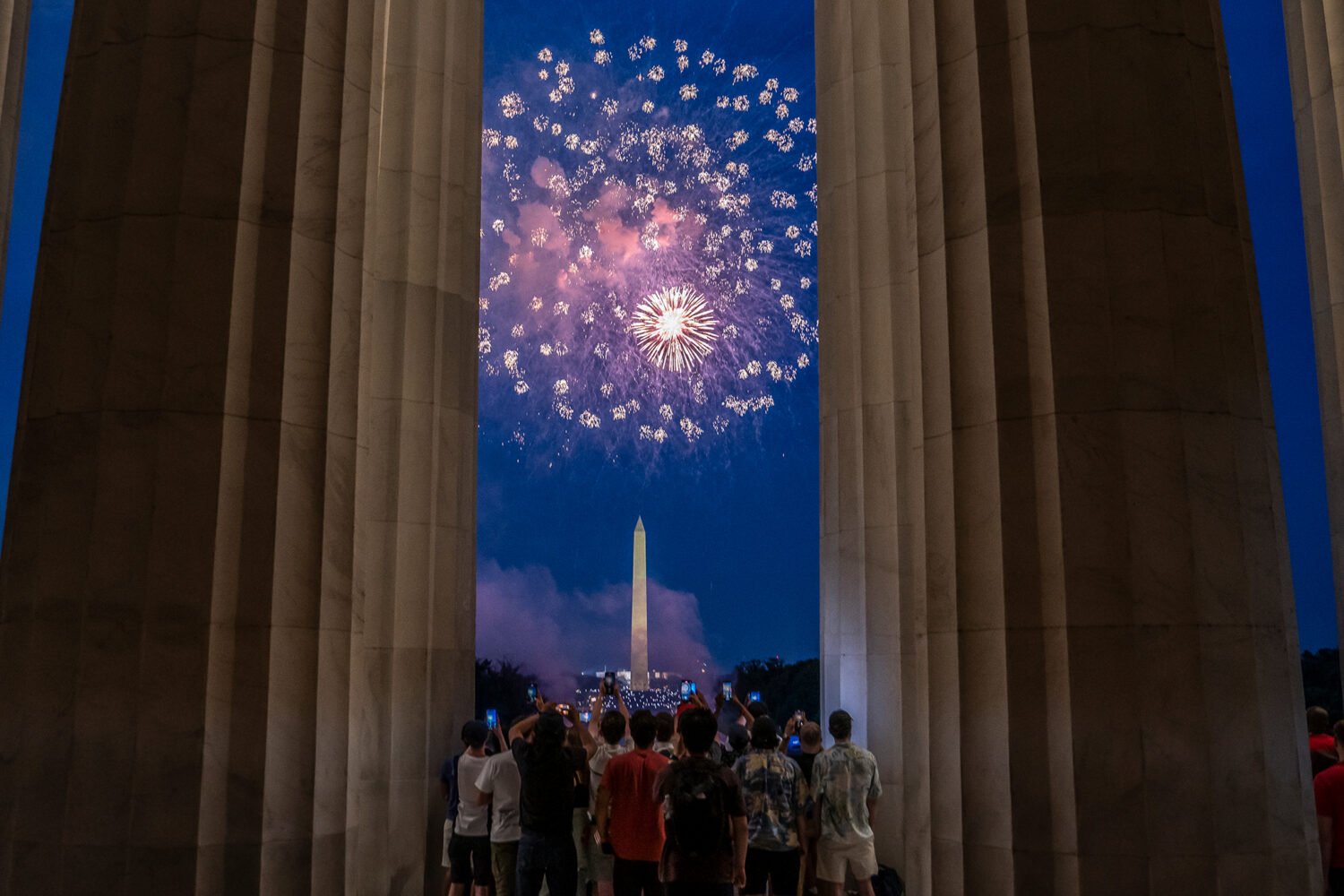PBS has been getting raked over since it admitted Monday night that some of the fireworks footage included in its annual A Capitol Fourth broadcast was used from previous years. The network at first defended the creative editing as the “patriotic thing to do” after Washington-area viewers noticed that the clear skies they were seeing on television did not match the heavy cloud cover that lingered over DC after a rain-soaked Independence Day.
“Because this year’s fireworks were difficult to see due to the weather, we made the decision to intercut fireworks footage from previous A Capitol Fourth concerts for the best possible television viewing experience,” PBS said in a statement pushed out on social media after 1:30 AM Tuesday.
But here’s the rub, at least for public television’s DC-area viewers: canned fireworks footage is nothing new. Until 2015, WETA, which co-produces A Capitol Fourth with Capital Concerts (which also produces PBS’s Gary Sinise-hosted Memorial Day show), followed the main show with a half-hour show called DC Fireworks Extravganza, filling an otherwise sleepy programming block with fireworks going off over the Mall accompanied by music selected to inspire more patriotic feelings after the bombast of A Capitol Fourth.
The DC Fireworks Extravaganza featured footage that was first recorded in 1992 and shown every year between the live, 90-minute broadcast of A Capitol Fourth and the replay beginning at 10 PM. And as dated as the explosions of color and light became, the soundtrack was even more hoary, including several 19th-century minstrel songs, as Jonathan L. Fischer reported for Washington City Paper in 2010. The songs included titles like “Old Black Joe,” “Camptown Races,” and Elvis Presley’s recording of “Dixie.” The song selection, unsurprisingly, elicited a handful of complaints at WETA every year.
The DC Fireworks Extravaganza was bumped from WETA’s schedule last night, as A Capital Fourth stretched to two hours and was replayed immediately at 10 PM.
By the morning, PBS was under intense scrutiny for fudging its annual fireworks show, with critics saying it should have informed viewers that the bursts they were seeing on their screens were actually recycled. That’s a fair request: Many re-airings of live shows come with graphics that advise the audience it has been previously broadcast. And even though July 4 is a light holiday for watching television, A Capitol Fourth has been PBS’s most-viewed program as recently as 2013. National viewership figures for last night’s edition are unavailable, but about 163,000 Washington-area households tuned in, according to a WETA spokeswoman. (Nationally, 6.97 million watched NBC’s Macy’s 4th of July Fireworks Spectacular, while 4.65 million watched CBS’s Boston Pops Fireworks Spectacular, according to Nielsen.)
Still, even without DC Fireworks Extravaganza, July 4 found a way to be controversial among Washington viewers. Perhaps instead of public television’s star-crossed attempts to broadcast celebrations of independence and freedom, we should have all just gone outside and watched our neighborhood fireworks instead.



















